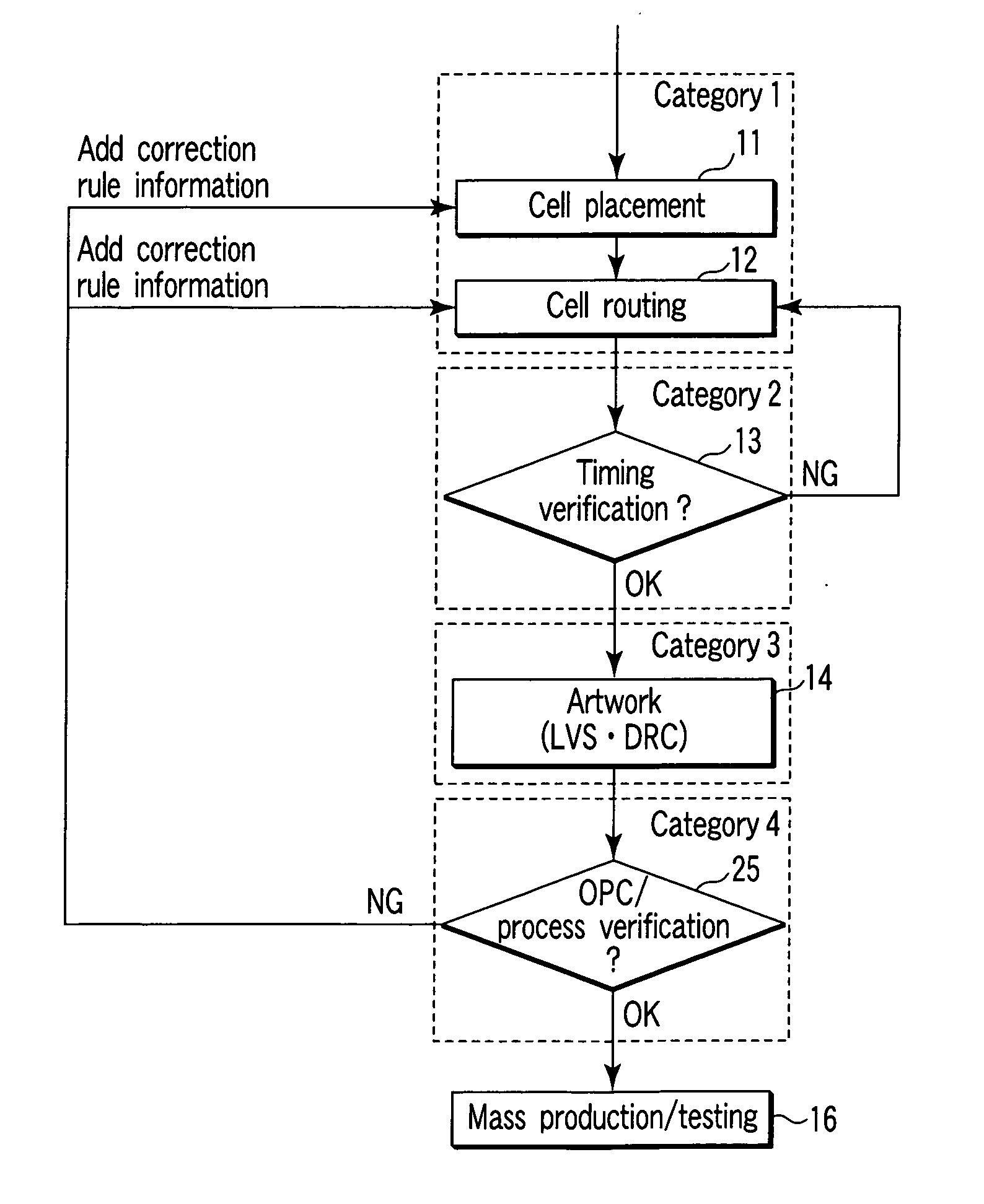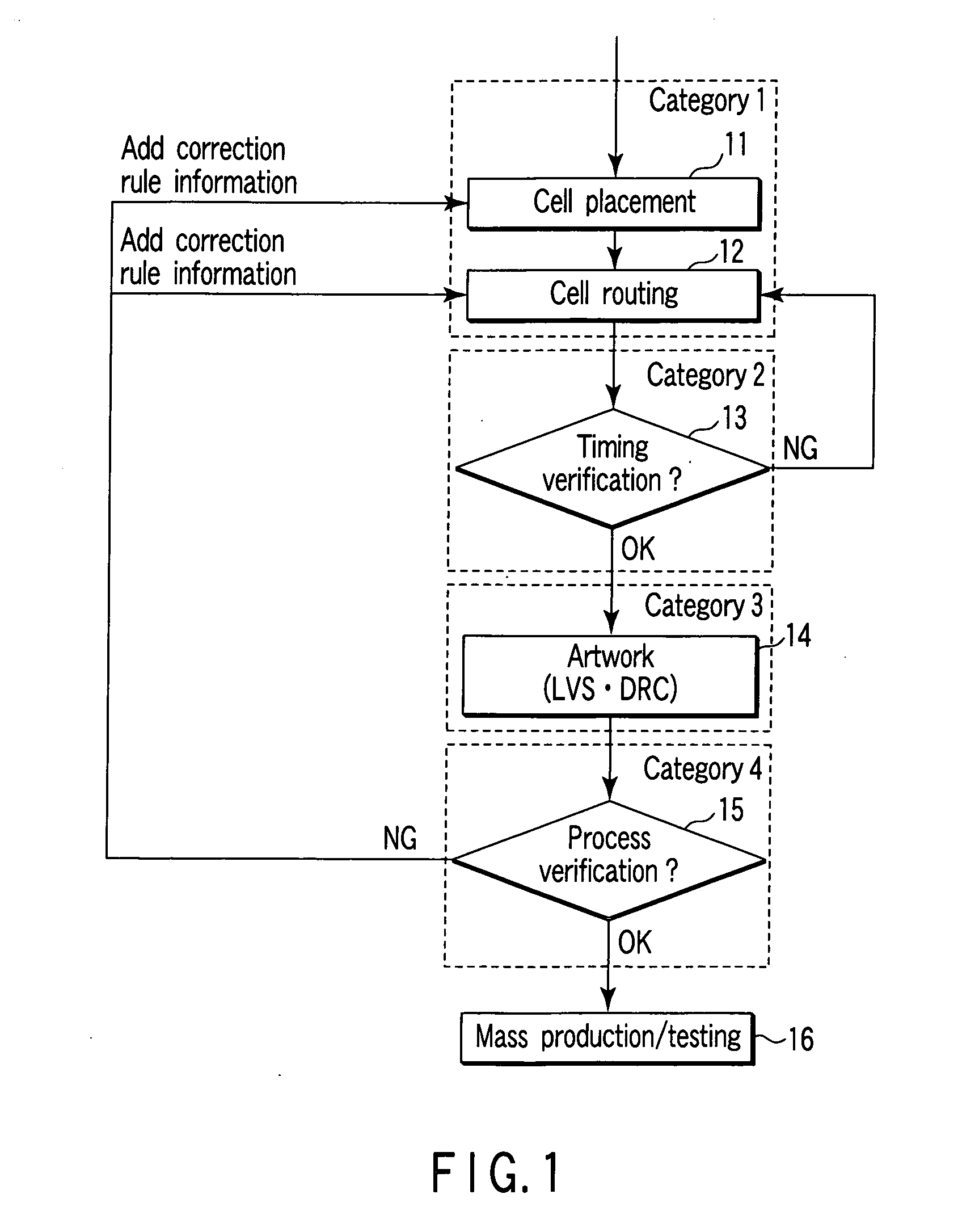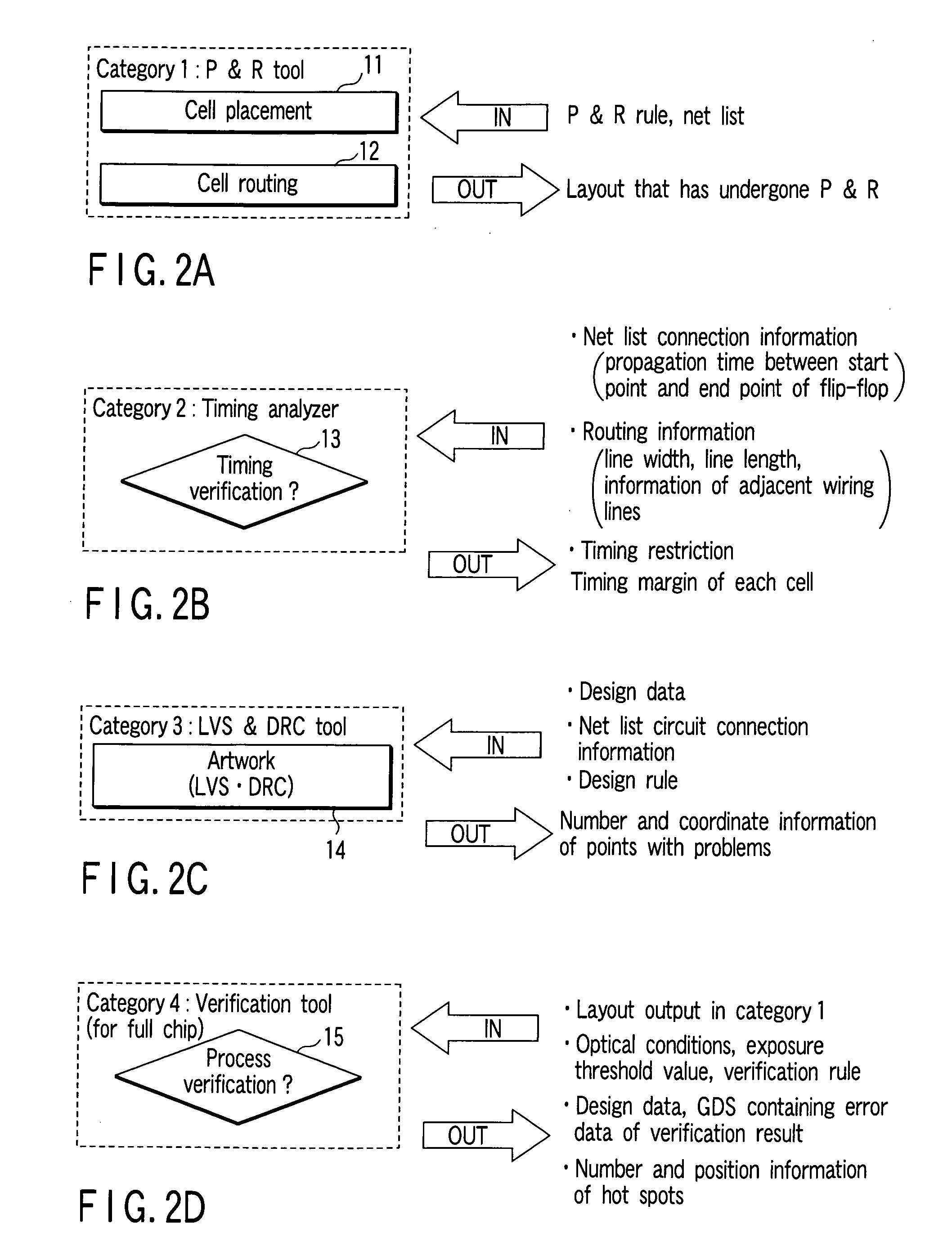Semiconductor circuit pattern design method for manufacturing semiconductor device or liquid crystal display device
a semiconductor device and circuit pattern technology, applied in the direction of cad circuit design, originals for photomechanical treatment, instruments, etc., can solve the problems of increasing the load on iteration, difficulty in faithfully forming a pattern, and increasing the chip area
- Summary
- Abstract
- Description
- Claims
- Application Information
AI Technical Summary
Benefits of technology
Problems solved by technology
Method used
Image
Examples
first embodiment
[0039]FIG. 1 is a flowchart showing a pattern data design method according to the first embodiment of the present invention.
[0040] In this embodiment, a cell placement step 11, cell routing step 12, timing verification step 13, artwork step 14, process verification step 15, and mass production / testing step 16 are executed sequentially. After the cell placement step 11 to process verification step 15, the verification result is fed back to the cell placement step 11 and cell routing step 12. In the conventional method, the cell placement step 11 to mass production / testing step 16 are executed continuously, as shown in FIG. 25. The first embodiment is different from the conventional method in this point.
[0041] In the conventional method, the continuous process is possible only when the layout has no problem from the viewpoint of both timing and lithography. Normally, since the layout has the above-described problems, the design pattern or mask pattern is repeatedly corrected until t...
second embodiment
[0058]FIG. 7 is a flowchart showing a pattern data design method according to the second embodiment of the present invention.
[0059] The design flow of the second embodiment is almost the same as that of the first embodiment shown in FIG. 1 except that an OPC / process verification step 25 is executed in place of the process verification step 15. That is, the flow of this embodiment is different from that of the first embodiment in that an OPC process is executed for a design pattern in process verification of the step 25. The flow is different from the conventional method in that the result of the OPC / process verification step 25 is fed back to a cell placement step 11 or cell routing step 12. The process flow of this embodiment will be described below.
[0060]FIGS. 8A to 8D show categories of the flow in FIG. 7 divided in accordance with the tools of processes. As is apparent from comparison with FIGS. 2A to 2D, categories 1 to 3 in FIGS. 8A to 8C are the same as in the first embodim...
third embodiment
[0073]FIG. 9 is a flowchart showing a pattern data design method according to the third embodiment of the present invention.
[0074] The third embodiment is different from the first embodiment in that a critical path extraction step 31 is executed after a cell placement step 11 to timing verification step 13 of the first embodiment to selectively verify the area around the critical path. For this purpose, a critical path inclusive layout cutting step 32, local verification step 33, hot spot check step 34, layout correction method selection step 35, and incremental routing correction step 36 are added.
[0075]FIGS. 10A to 10D and 11A to 11C show categories of the flow in FIG. 9 divided in accordance with the tools of processes. In the process of this embodiment, as category 1 (steps 11 and 12), a cell placement / routing process is executed by using a P & R tool, as shown in FIG. 10A, as in the first embodiment. In category 2 (steps 13 and 31), as shown in FIG. 10B, timing verification i...
PUM
| Property | Measurement | Unit |
|---|---|---|
| width | aaaaa | aaaaa |
| focal depth | aaaaa | aaaaa |
| electrical characteristic | aaaaa | aaaaa |
Abstract
Description
Claims
Application Information
 Login to View More
Login to View More - R&D
- Intellectual Property
- Life Sciences
- Materials
- Tech Scout
- Unparalleled Data Quality
- Higher Quality Content
- 60% Fewer Hallucinations
Browse by: Latest US Patents, China's latest patents, Technical Efficacy Thesaurus, Application Domain, Technology Topic, Popular Technical Reports.
© 2025 PatSnap. All rights reserved.Legal|Privacy policy|Modern Slavery Act Transparency Statement|Sitemap|About US| Contact US: help@patsnap.com



